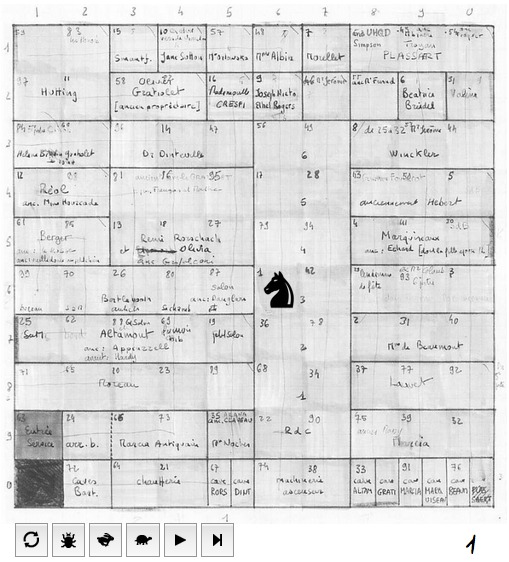Lessons from the OuLiPo
I’m delighted to announce that my talk, Lessons from the OuLiPo, has been accepted for the ACCU 2015 conference.

The talk follows up on a lightning talk I gave at my employer’s last year about Georges Perec’s masterpiece, Life A User’s Manual. Click the graphic below to play the animation and read the transcript.
I’ll be giving a preview of the full version here in Bristol in a couple of weeks. I hope you can come along. More details on Meetup.
In the meanwhile, the next section of this page introduces the ideas I’ll be exploring in my talk.
§
As software developers we often ponder what it is we do: are we architects, engineers, or scientists? Are we — gasp! — rock stars or ninjas? Which metaphors best fit? Tending a code base is like gardening. Through the seasons we encourage new growth, whilst pruning back dead code and squashing bugs. Programming is like carpentry, maybe. Select the right tool from a set kept sharp and ready for action. Programming is like cooking. Source the finest ingredients and follow the recipe.
I think there’s a more obvious metaphor. Actually there’s nothing meta- about it. It is what we do.
We’re writers.
We write to communicate and to instruct. We write for fun and profit. We edit and adapt. We rewrite. We borrow text from other writers. The languages we think we write in — C++, Python, Javascript — are actually just highly stylised dialects of our native tongue. Like poets we’re particular about punctuation and space. We have strange ideas about spelling. The texts we write, programs, are subject to formal constraints.
We’re writers bound by mathematical rules.
November, 1960. Paris. The poet Raymond Queneau organises the first meeting of a group which will become known as OuLiPo. A dozen turn up: writers, mathematicians, pataphysicians and surrealists. Their mission: to explore the literary potential of applying mathematical constraints to texts.
Of course constrained writing is nothing new — consider the haiku: 17 syllables, arranged as 3 phrases of 5, 7 and 5 syllables, a Japanese form many centuries old — and one strand of the OuLiPo’s efforts is devoted to researching past experiments and structures; but I claim it’s no coincidence the OuLiPo emerged at much the same time as our own novel form of constrained writing: computer programming.
In this talk I’ll discuss the OuLiPo in more depth, investigating the parallels between their work and ours. We’ll focus on Georges Perec, whose book Life A User’s Manual is an Oulipian tour de force. There will be some code, as well as quines, easter eggs and — as you’d expect — bugs.
